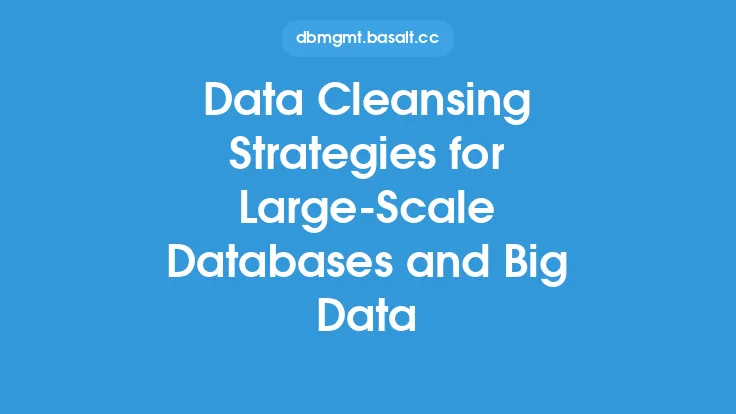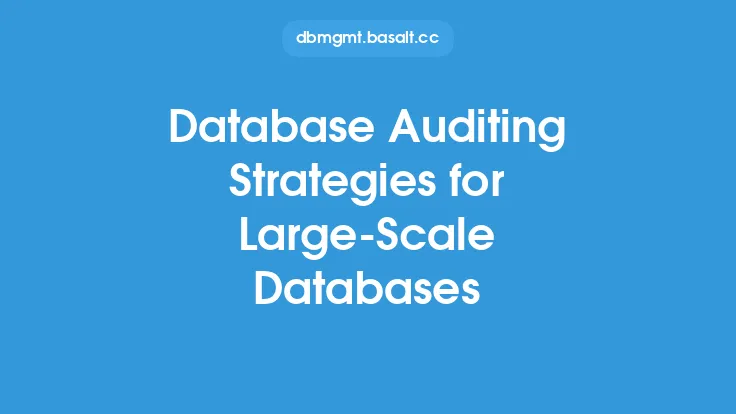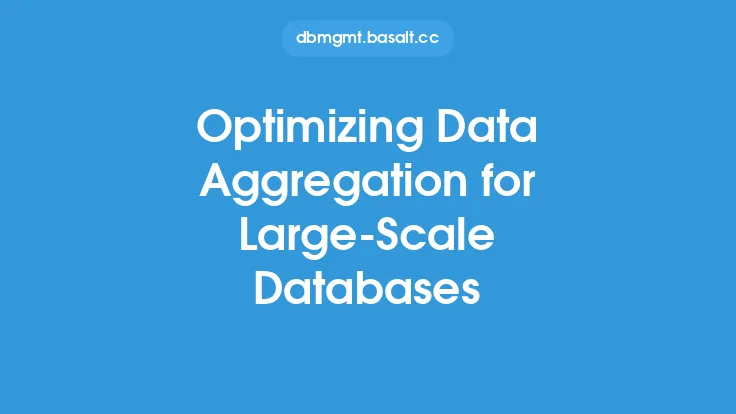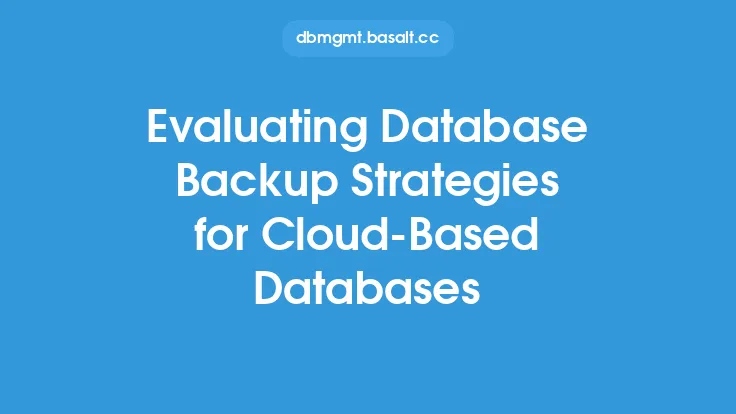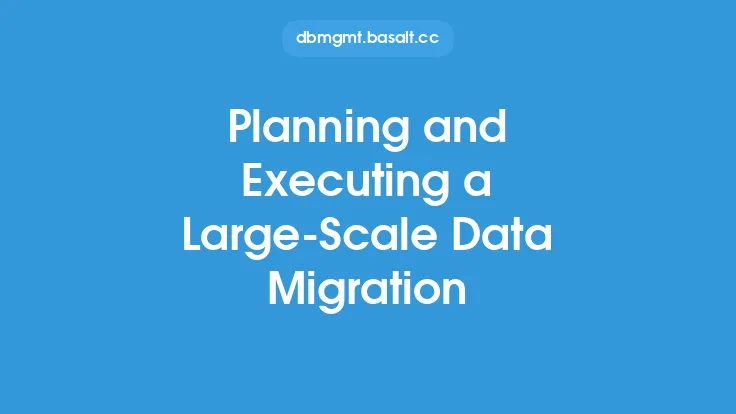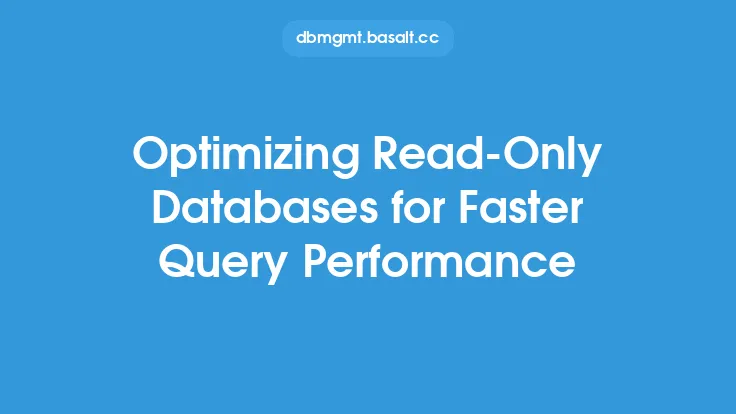When dealing with large-scale databases, effective data formatting is crucial for ensuring data consistency, readability, and analysis. Large-scale databases contain vast amounts of data, and proper formatting is essential to make this data usable and accessible. In this article, we will explore the strategies for effective data formatting in large-scale databases, highlighting the importance of standardization, data type selection, and formatting techniques.
Introduction to Data Formatting Strategies
Data formatting strategies are designed to organize and structure data in a way that makes it easy to understand, analyze, and retrieve. These strategies involve selecting the appropriate data types, formatting data fields, and establishing standards for data entry and storage. Effective data formatting strategies can help reduce errors, improve data quality, and enhance the overall performance of the database. By implementing standardized data formatting strategies, organizations can ensure that their large-scale databases are well-organized, efficient, and scalable.
Data Type Selection and Formatting
Data type selection is a critical aspect of data formatting in large-scale databases. Choosing the right data type for each field can help ensure data consistency, reduce errors, and improve data analysis. Common data types include integers, strings, dates, and timestamps. Each data type has its own set of formatting rules and conventions, and selecting the correct data type can help ensure that data is stored and retrieved correctly. For example, using a date data type can help ensure that dates are stored in a consistent format, making it easier to perform date-based queries and analysis.
Standardization and Conventions
Standardization and conventions are essential for effective data formatting in large-scale databases. Establishing standards for data entry, storage, and retrieval can help ensure that data is consistent across the database. This includes using standardized formatting for dates, times, and numbers, as well as establishing conventions for data field naming and organization. Standardization can also help reduce errors, improve data quality, and enhance the overall performance of the database. By establishing clear standards and conventions, organizations can ensure that their large-scale databases are well-organized, efficient, and scalable.
Data Field Formatting and Organization
Data field formatting and organization are critical aspects of data formatting in large-scale databases. Properly formatting and organizing data fields can help ensure that data is easy to understand, analyze, and retrieve. This includes using clear and descriptive field names, establishing consistent formatting for data fields, and organizing data fields in a logical and consistent manner. For example, using a consistent naming convention for data fields can help ensure that data is easy to locate and retrieve, while establishing clear formatting rules for data fields can help reduce errors and improve data quality.
Best Practices for Data Formatting
Best practices for data formatting in large-scale databases include establishing clear standards and conventions, selecting the appropriate data types, and formatting data fields in a consistent and logical manner. Additionally, organizations should establish clear guidelines for data entry and storage, and ensure that data is regularly reviewed and updated to ensure accuracy and consistency. By following these best practices, organizations can ensure that their large-scale databases are well-organized, efficient, and scalable, and that data is accurate, consistent, and easy to analyze.
Tools and Techniques for Data Formatting
There are a variety of tools and techniques available for data formatting in large-scale databases. These include data formatting software, data transformation tools, and data quality control systems. Data formatting software can help automate the data formatting process, while data transformation tools can help convert data from one format to another. Data quality control systems can help ensure that data is accurate, consistent, and complete, and can help identify and correct errors in the data. By using these tools and techniques, organizations can streamline the data formatting process, improve data quality, and enhance the overall performance of the database.
Challenges and Limitations of Data Formatting
Despite the importance of data formatting in large-scale databases, there are several challenges and limitations to consider. These include the complexity of data formatting, the need for standardization and conventions, and the potential for errors and inconsistencies. Additionally, data formatting can be time-consuming and resource-intensive, particularly in large-scale databases with vast amounts of data. To overcome these challenges, organizations should establish clear standards and conventions, invest in data formatting software and tools, and ensure that data is regularly reviewed and updated to ensure accuracy and consistency.
Future of Data Formatting in Large-Scale Databases
The future of data formatting in large-scale databases is likely to be shaped by advances in technology, changes in data management practices, and the growing need for data-driven decision making. As data continues to grow in volume, variety, and complexity, the need for effective data formatting strategies will become increasingly important. Organizations will need to invest in data formatting software and tools, establish clear standards and conventions, and ensure that data is regularly reviewed and updated to ensure accuracy and consistency. By doing so, organizations can ensure that their large-scale databases are well-organized, efficient, and scalable, and that data is accurate, consistent, and easy to analyze.
